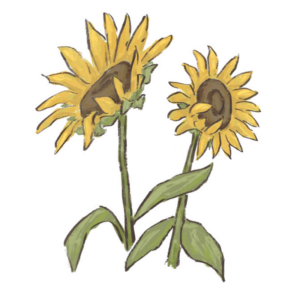
Staying connected to purpose while making progress visible
Like a sunflower follows the sun, measuring and tracking impact helps your mahi stay aligned with its intent.
It’s not about ticking boxes—it’s about reflecting, learning, and showing how change is growing over time. Measurement can illuminate your journey, build trust, and centre community voice in everything you do.
What This Means
Measurement is more than metrics. It’s a way to stay grounded in purpose, reflect what communities value, and tell the unfolding story of change. In our He Mara Mahi Tahi, it helps us notice what’s growing, what needs nurturing, and where care is needed next.
Why It Matters
- Helps you know if you’re on track—or need to adapt
- Builds credibility and trust with funders, partners, and communities
- Celebrates progress and shares learning
- Shifts reporting from compliance to contribution
Key questions to reflect on
- What are we trying to measure—and why?
- Are we capturing what matters most to our community?
- Are we using tools that reflect both data and lived experience?
- How do we share progress in ways that are honest and engaging?
- Who else is collecting insight in this space?
Measurement doesn’t need to start from scratch. Others may be developing tohu, surveys, or pūrākau frameworks that align with your kaupapa. Connect and learn—measurement can be a collective tool, not a solo task.
👉 Check out the visual guide to measuring impact 🔗 Visual guide to measuring impact
Measuring and tracking approaches
Each method below reveals different aspects of growth—use them together to see the full picture.
🌀 Theory of Change
A clear roadmap that links your mahi to the outcomes you’re working towards. It helps everyone understand how and why your work leads to change.
🌱 Tohu of Change
Culturally grounded indicators like the return of birds, seasonal shifts, or changes in community rhythms. These reflect Indigenous ways of noticing wellbeing.
📊 Quantitative Evidence
Tracks what can be counted—like participant numbers, survey results, or attendance rates. Use it to show scale and reach, but don’t let numbers tell the whole story.
💸 Logic Model
A structured way to map your inputs, actions, and expected results. Helpful for funders, planning, and internal clarity.
💸 Social Return on Investment (SROI)
Estimates the social and economic value your mahi creates. Useful for funders and boards when showing value for money.
📊 Dashboards
Visual tools that make data easy to track and share in real time. Can include charts, timelines, and traffic lights.
Use visual tools like Power BI to track and share real-time data. 🔗Power B Guide to Data Storytelling
🧮 Rubrics
Show how change unfolds across stages—from early seeds to full bloom. Great for tracking progress in learning, behaviour, or capacity.
Mapping Outcomes
Mapping outcomes helps you make the difference your mahi is making visible—by showing how actions lead to meaningful, lasting change.
🌸 Qualitative Evidence
Some changes are best felt, seen, or shared through stories. Qualitative approaches make the invisible visible by capturing voices, relationships, and cultural meaning.
Stories, interviews, photos, and creative methods reveal deep, personal insights. Ideal for capturing relational, cultural, and emotional shifts.
Best for:
✔ Understanding why change happens
✔ Capturing relational and cultural shifts
✔ Surfacing deep insights that data can’t reach
Methods include:
- Interviews and focus groups (e.g. whānau reflections)
- Case studies and storytelling (e.g. before-and-after journeys)
- Observations (e.g. how people engage and build trust)
- Creative and visual methods (e.g. art, photos, performances)
What signs of change would your community recognise—even if they can’t be counted?
Key questions to reflect on
- Are we telling our story alone, or could we co-share impact with others who contributed?
- Could we offer our learning to others in similar spaces—or showcase collective results?
Practical tips
- Mix numbers, stories, visuals, and reflections
- Set indicators early—but keep revisiting them
- Involve staff, community, and partners in tracking what matters
Resources
Visit the Toolshed for templates and resources
Links to examples
🔗 Kaupapa Māori Logic Model A kaupapa-driven logic model connects whakapapa (origins), kaupapa (principles), and whanaungatanga (relationships) to create meaningful, values-based impact.
🔗A Theory of Change – Evaluation Hub Check out the Ministry of Education’s video on logic models.
🔗 Explore the Storytelling | What Works website for examples and storytelling tools
Growth flourishes when progress is tracked, outcomes are visible, and learning shapes the journey.

The Seedling
Defining Your Intention

The Roots
What Good Looks lIke

The Watering Can
Learning as we grow

The Harvest Basket
Sharing Impact
